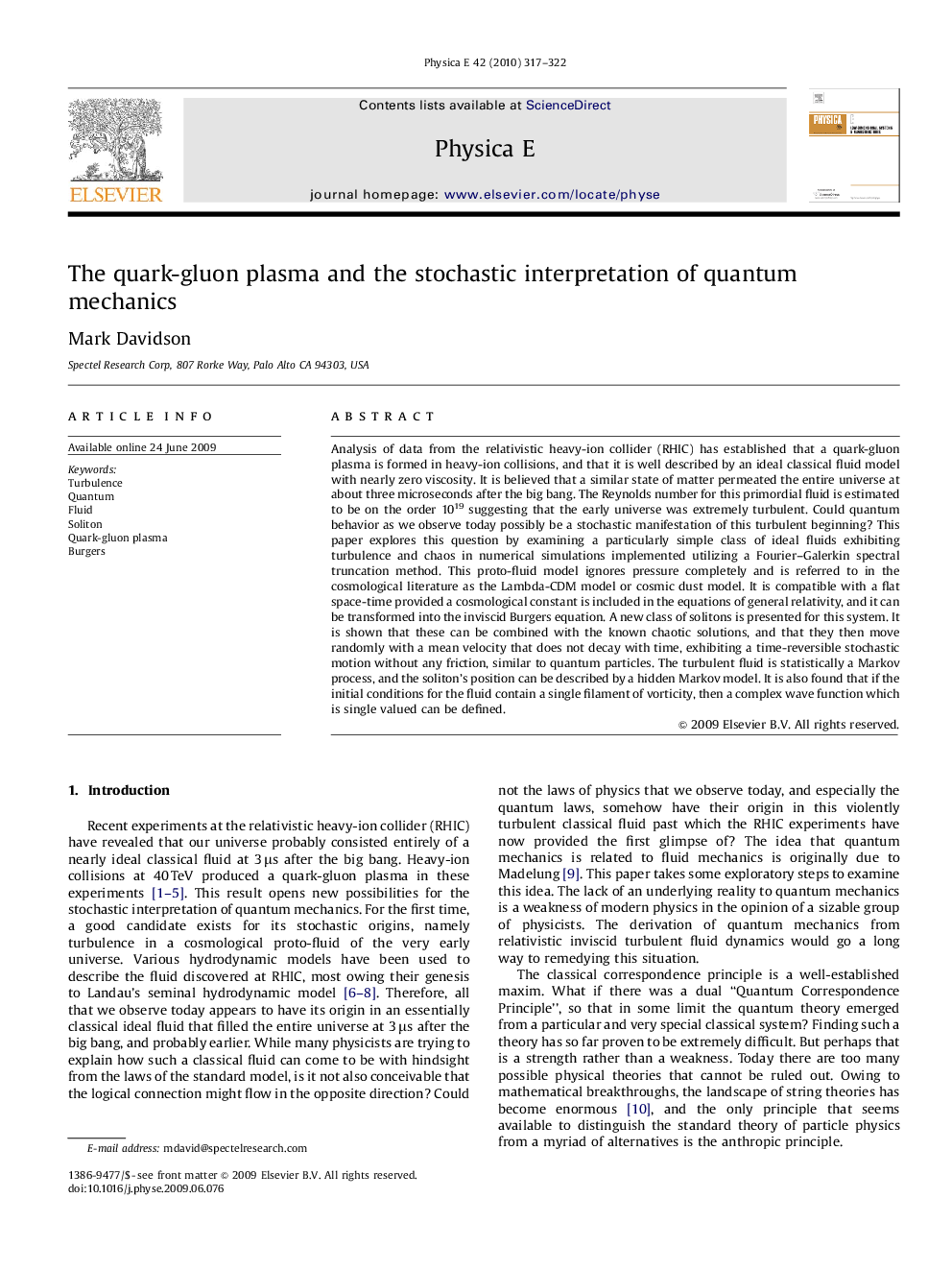| Article ID | Journal | Published Year | Pages | File Type |
|---|---|---|---|---|
| 1546426 | Physica E: Low-dimensional Systems and Nanostructures | 2010 | 6 Pages |
Abstract
Analysis of data from the relativistic heavy-ion collider (RHIC) has established that a quark-gluon plasma is formed in heavy-ion collisions, and that it is well described by an ideal classical fluid model with nearly zero viscosity. It is believed that a similar state of matter permeated the entire universe at about three microseconds after the big bang. The Reynolds number for this primordial fluid is estimated to be on the order 1019 suggesting that the early universe was extremely turbulent. Could quantum behavior as we observe today possibly be a stochastic manifestation of this turbulent beginning? This paper explores this question by examining a particularly simple class of ideal fluids exhibiting turbulence and chaos in numerical simulations implemented utilizing a Fourier-Galerkin spectral truncation method. This proto-fluid model ignores pressure completely and is referred to in the cosmological literature as the Lambda-CDM model or cosmic dust model. It is compatible with a flat space-time provided a cosmological constant is included in the equations of general relativity, and it can be transformed into the inviscid Burgers equation. A new class of solitons is presented for this system. It is shown that these can be combined with the known chaotic solutions, and that they then move randomly with a mean velocity that does not decay with time, exhibiting a time-reversible stochastic motion without any friction, similar to quantum particles. The turbulent fluid is statistically a Markov process, and the soliton's position can be described by a hidden Markov model. It is also found that if the initial conditions for the fluid contain a single filament of vorticity, then a complex wave function which is single valued can be defined.
Related Topics
Physical Sciences and Engineering
Materials Science
Electronic, Optical and Magnetic Materials
Authors
Mark Davidson,
